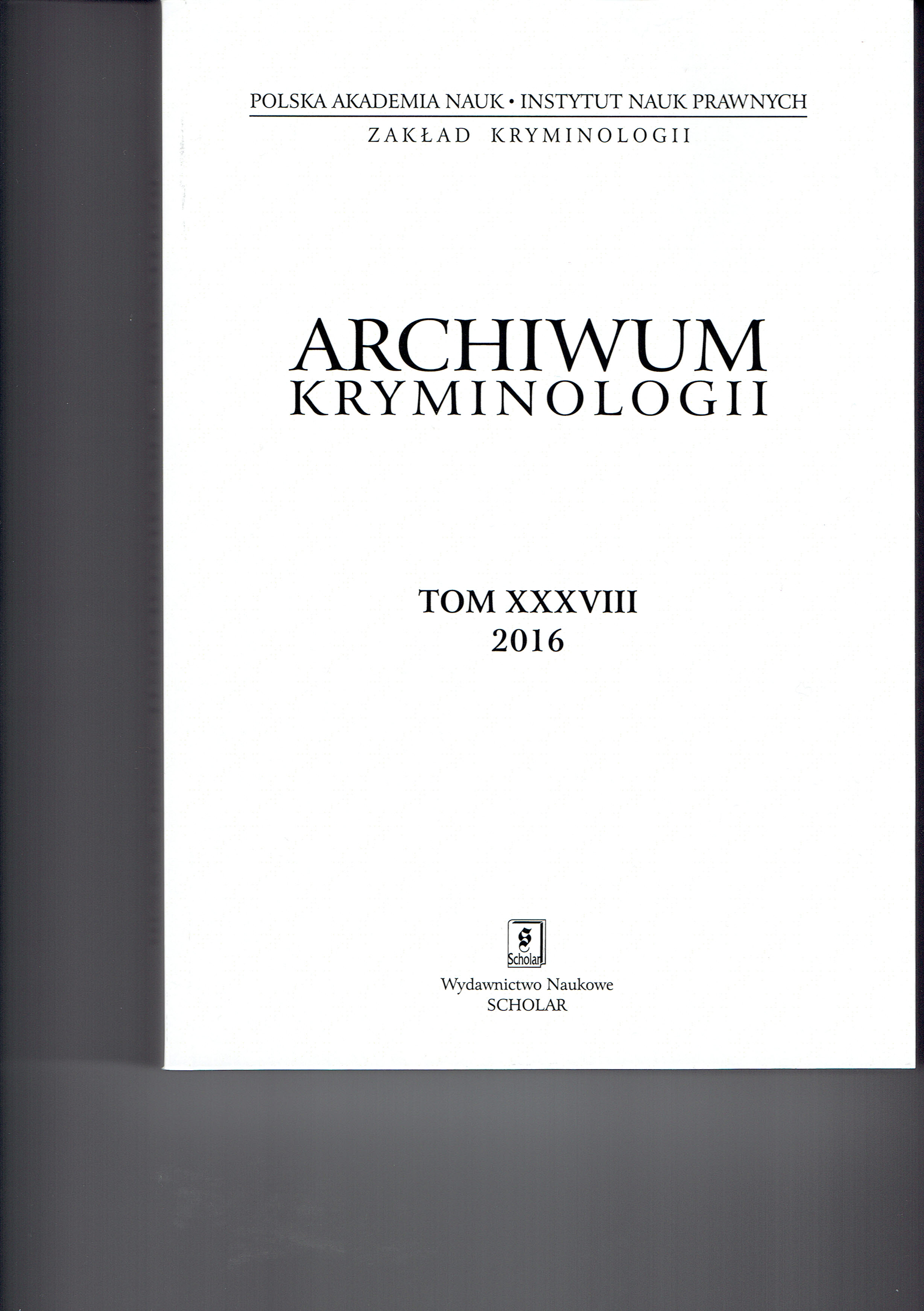Przejawy nielegalnej migracji w Polsce
Forms of Irregular Migration in Poland
Author(s): Monika SzuleckaSubject(s): Law, Constitution, Jurisprudence, Criminal Law
Published by: Instytut Nauk Prawnych PAN
Keywords: migracja; nielegalna migracja; kryminologia;
Summary/Abstract: The article analyses a series of in-depth expert interviews conducted in the first half of 2015 with border guards from selected units across Poland within the framework of the project CIS – Modular Multipurpose System of Foreigner Identification with a risk of trafficking analysis module. Special preparedness for intensified migration in Europe, and potentially also in Poland, observed already in the first half of 2015 when the fieldwork was conducted, indicates that although the analyzed material covers the period before the onset of the refugee crisis, its conclusions are universal and can be applied to a different migratory situation. The term “irregular migration” is used throughout the text to describe different instances of non-compliance with the law at different stages of the migration process (mainly entry, residence, and work), keeping in mind that it is an imprecise term that is increasingly replaced with expressions meant to reduce stigmatization on the one hand, and to convey the complexity of the issue on the other. The expression “irregular migration” functions in Polish law, although without a precise definition. The Border Guard, as stated in the law regulating the activities of this formation, is the primary state agency tasked with preventing and combating irregular migration. Statistics available in Poland – which allow to estimate the supposed scale of irregular migration – show it to be a very marginal phenomenon, in fact similar to immigration to Poland, in spite of an observable climb in statistics since 2014. From the viewpoint of the relevant services, it seems alarming, however, that although irregular migration levels remain relatively low (particularly compared to other EU countries), there are many (although it is not clear on what scale) violations, associated, if not with irregular migration as such, then with processes typically described as semi-legal or quasi-legal migration. The data available indicate that the number of foreigners staying in Poland illegally is somewhere between a couple to several thousand people. The picture is somewhat different when it comes to the estimated number of foreigners staying in Poland for very short periods of time without the required documents. It is impossible to determine how many such people enter and leave Poland every month or year, particularly due to Schengen arrangements which leave a large section of the state border without checks. Comparing irregular migration-related threats from a dozen years ago to those encountered in Poland today, we can describe today’s irregular migration as irregular migration in “velvet gloves,” or semi-legal migration. On the one hand, the complexity and content of Polish migration law (in terms of what is permitted, and what is not) create potential for abuses. These abuses have, however, become more and more difficult to detect and demonstrate in proceedings before other authorities (prosecutors, courts). Unauthorized movements or organized trans-border travel often have an air of legality; many elements of the migration process comply with the law, authentic documents are used and procedures are followed, yet deeper analysis reveals that the process is essentially based on activities that violate the law (for example, obtaining the attestation of false statements under false pretenses, deliberately misleading a public official, staying within the territory of Poland for purposes other than those stated when applying for a residence or entry permit). The results of the qualitative study carried out among experts show that irregular migration in Poland in the second decade of the twenty-first century is essentially a marginal problem, particularly when compared to the challenges faced by other EU countries, unless we also consider so-called semi-legal migration. The latter is a massscale phenomenon, although this mass quality is not evidenced by official figures. Two phenomena belonging to semi-legal migration, with the potential of turning into “classic” irregular migration, came to the fore in the discussion on forms of irregular migration in Poland, the possibilities of detecting them, as well as the limited means there are of preventing them. The first is unjustified recourse to refugee procedures. The second consists in abusing a procedure that experts have deemed virtually unverifiable, namely the simplified procedure for hiring foreigners based on the employer’s declaration of intent. The fact that this procedure has contributed to the growth of services linked directly to organized irregular migration was mentioned by the respondents as the most problematic aspect of the said legal instrument. The issue of abusing other procedures remained in the background, which does not however mean that these infractions are treated dismissively, however from the viewpoint of the experts interviewed, they are either too few or pose less of a problem in terms of detection and application of relevant sanctions. Taking into account the forms of irregular migration discussed in the article, including types of violations and the limited possibilities of checking them, effective enforcement of compliance with the law on entry, residence and work seems a considerable challenge, particularly given the not always consistent regulations and their interpretation. The institution with the most experience in contacts with foreigners, namely the Border Guard, has long-standing experience in protecting state borders. Currently, the Border Guard is not only a side in various administrative and penal proceedings, but also an institution controlling the legality of stay and work in the territory of Poland. This requires that migration processes be looked at in a broader context, and not merely through the lens of individual infractions. The author attempts to bring out the said broad context and to describe and explain occurring forms of irregular migration.
Journal: Archiwum Kryminologii
- Issue Year: 2016
- Issue No: XXXVIII
- Page Range: 191-268
- Page Count: 78
- Language: Polish

